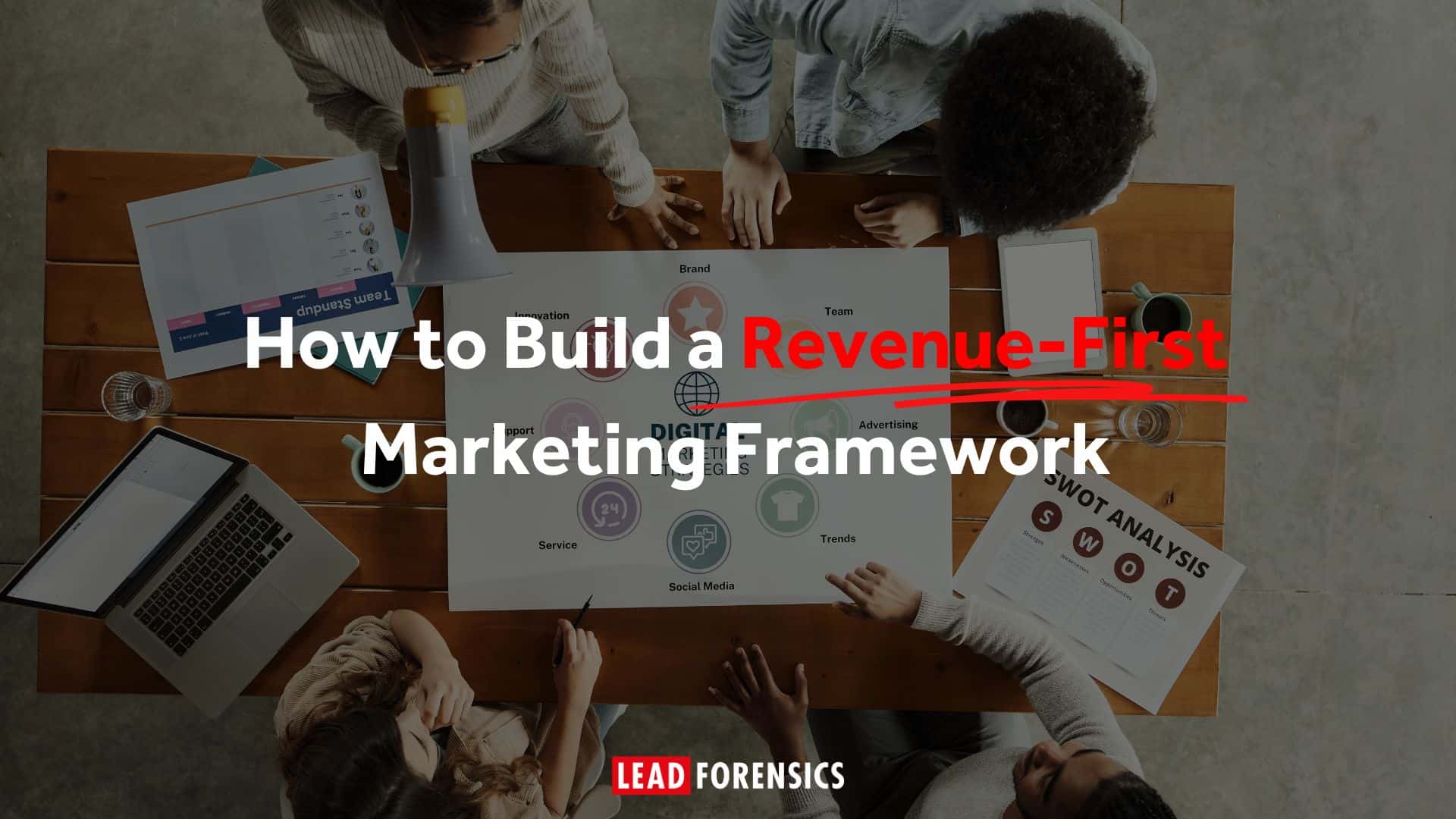Are you Looking to build a resilient sales pipeline that can tackle any challenge? Then check out our webinar “Pipeline Problems? Innovative Strategies to Discover Clients” hosted by Lead Forensics featuring Mark Ackers, Co-Founder and Head of Sales at MySalesCoach. Don’t miss this opportunity to take your B2B sales to the next level.
Instead of being demotivated by pipeline problems and drought periods, use them as an opportunity to review your strategies for acquiring and retaining prospects. These periods can actually be a positive if you take advantage of them.
In this blog post, you’ll discover some of the best tips and strategies to help you uncover hidden opportunities and maximize your sales potential. Who wouldn’t want that?
Identifying and Prioritising Target Prospects in a Slow Market
The current market situation has created a slowdown in sales for many businesses, leaving sales teams with pipeline problems, struggling to generate leads and close deals. However, this does not mean that people stop buying altogether during a slow market. The only difference is that they may take longer to make a decision. In such a situation, it is essential to focus on potential customers who have a pressing need and motivation to solve their problems, ensuring that your time and resources are used effectively.
One effective way to attract potential customers is by sharing valuable content on social media platforms such as LinkedIn. By providing advice, tips, and consultative ideas, you can establish yourself as an expert in your field, increasing engagement and reaching prospects. Your content should focus on the needs and interests of your potential customers rather than promoting your own products or services. This will increase your credibility and make you a trusted source of information.
While building your personal brand is essential, it is also important to consider your company’s brand beyond just your personal brand. People may not typically follow companies, but if they are following your company on social media, there is likely some level of interest there. Therefore, it is important to focus on building a strong brand for your company as well as your personal brand.
“I’ve learned that building a strong relationship with prospects is key. By focusing on creating content that allows people to get to know me, and promoting my own stuff only 5% of the time, I’ve been able to make people feel familiar with me. This has resulted in successful outreach, despite spending less than 15% of my time prospecting. Ultimately, people buy from people, and building that relationship is crucial.” – Mark Ackers, Co-Founder and Head of Sales at MySalesCoach.
To better tailor your sales approach, it is important to understand your potential customers’ interests and behaviours. This includes looking at who is following your competitors and why. Various platforms are available that provide intent data to discover prospects, such as Lead Forensics, which can help identify potential customers who have shown interest in your company.
Another effective strategy is to reach out to old leads who have previously shown interest in your company but did not convert into customers. Creating a closed loss list in your CRM and reaching out to these leads from a quality assurance perspective can provide valuable insights into the reasons for their decision. These insights can help you adjust your sales approach and potentially win back customers who may have previously been lost.
In summary, there are still opportunities to generate leads and close deals even in a slow market. By focusing on potential customers who have a strong need and motivation to solve their problem, establishing your personal and company brand, leveraging intent data, and reaching out to old leads, you can increase your chances of success. It may require some out-of-the-box thinking and digging in unexpected places, but with the right approach, you can continue to drive sales even in a slow market.
Standing Out in a Crowded Market: Tips for Beating the Competition
Standing out in a crowded market is one of the biggest challenges facing businesses today. With so many companies vying for customers’ attention, it can be difficult to differentiate yourself from the competition. However, competition is an unavoidable reality. Whether you’re a startup or a well-established company, there will always be other businesses competing for your customers’ attention. Sometimes having a formidable competitor can actually be an advantage.
“In business, threats can often be disguised as opportunities. When facing a well-funded competitor, it’s important to stay agile and position yourself as the alternative. By offering a solution that is more accessible to customers, you can turn your competitor’s disadvantage into your advantage and grow your business.” – Mark Ackers, Co-Founder and Head of Sales at MySalesCoach.
Rather than attempting to compete with the high prices and aggressive terms of your competitors, consider positioning yourself as an alternative. By focusing on helping customers make informed decisions and directing them towards the best solution for their specific needs, you’ll be able to attract customers who couldn’t afford your competitor’s offerings.
To stand out in a crowded market, it’s essential to comprehend your unique value proposition and to effectively communicate this to customers. It’s not necessarily about being the biggest or the most well-funded. Rather, it’s about comprehending your strengths and limitations and positioning yourself accordingly. Sometimes, having a robust competitor can be an advantage as it obliges you to concentrate on what differentiates you and why customers should choose your offerings over those of your competitors.
Ultimately, standing out in a crowded market requires a blend of self-awareness, a thorough understanding of your customers, and a willingness to redirect them if necessary.
Email Marketing Campaigns
Email marketing is an essential part of any sales strategy when struggling with pipeline problems, but it can be a challenging concept to grasp. The reason being, people’s inboxes are a premium space, and it’s hard to stand out among the thousands of emails that someone might receive. However, email marketing is crucial for tracking engagement and determining whether your sales efforts are working or not.
One of the most significant benefits of email marketing is the ability to track who opens your email and what they do with it. You can see how long they spent reading it and whether they shared it with anyone. This information is invaluable when it comes to determining whether your sales strategy is effective or not.
The key to successful email marketing is personalization. You need to make the email about the person receiving it, not about yourself or your product. The first email in the sequence should be hyper-personalised, engaging, and encourage the recipient to take action. If you do it right, email marketing can be incredibly powerful.
“In sales, email marketing can be both a powerful tool and a trap. It’s easy to become complacent and send out a batch of emails, but without split-testing, optimization, and timely follow-up, those emails may go unopened and unacted upon.”- Mark Ackers, Co-Founder and Head of Sales at MySalesCoach.
In conclusion, email marketing is a crucial part of any sales strategy and provides invaluable data when it comes to tracking engagement and determining the effectiveness of your sales efforts. However, it’s vital to personalise your emails and make them engaging, and not fall into the trap of becoming complacent.
Staying Motivated and Positive During a Dry Spell
Motivation is often seen as the key to success. We wait for the moment when inspiration hits us and propels us forward towards our goals. But what if motivation isn’t the key? What if it’s actually just a byproduct of action? The truth is, we can’t always rely on motivation to drive us towards success. Sometimes, we have to force ourselves to take action, even when we don’t feel like it.
“Making a cold call or sending an email is like going to the gym – the hardest part is showing up, but you’ll never regret it when it leads to a successful meeting.” -Mark Ackers, Co-Founder and Head of Sales at MySalesCoach.
The golden rule is: Control what you can control. You may not be able to control what you have to do, but you can control how you approach it. Make the motivation happen by taking action and forcing yourself to do the tough work of prospecting.
It’s important to remember that motivation isn’t always going to be there when we need it. Sometimes, we have to create it ourselves. By taking action, even when it’s difficult, we can create our own motivation and propel ourselves towards success. So, the next time you’re waiting for motivation to magically appear, remember that before motivation comes action. Take control of what you can control and make the motivation happen.
Building a Resilient Sales Pipeline
As a salesperson, you are the CEO of your own success. Where you spend your time will directly link to how successful you are. This is because you have control over where you choose to spend your time. Therefore, it’s essential to spend your time with people who are motivated to solve the problem you’re selling.
As salespeople, we tend to be hopeful and often waste time in the land of hope. We hope that the potential customer will buy our product just because they’ve shown some level of interest. However, we need to be more strategic with our time and ask the tough questions to determine if they’re worth our time. Spending time with people that want to buy is critical, as hope doesn’t sell.
Additionally, you can control how many pieces of outreach you do every day, how many times you pick up the phone, and how many emails you send. What you can’t control is whether people will answer the phone, have a good conversation, be in a good mood, or have the problem you’re trying to solve. However, if you do enough outreach, you will have success. It’s all about figuring out your numbers and being disciplined and setting yourself up for success.
“Salespeople need to be structured and intentional about where they spend their time. Determine your cold calling time, prep time, and follow-up time. Set goals for how many calls and emails you need to make in a given time frame.”-Mark Ackers, Co-Founder and Head of Sales at MySalesCoach.
Finally, don’t be afraid to push people away. Spend time helping people decide if what you’re offering is what they need. If it is, they’ll love to buy it, and if it’s not, there are no hard feelings. We can’t be everything to everyone, and that’s okay!









